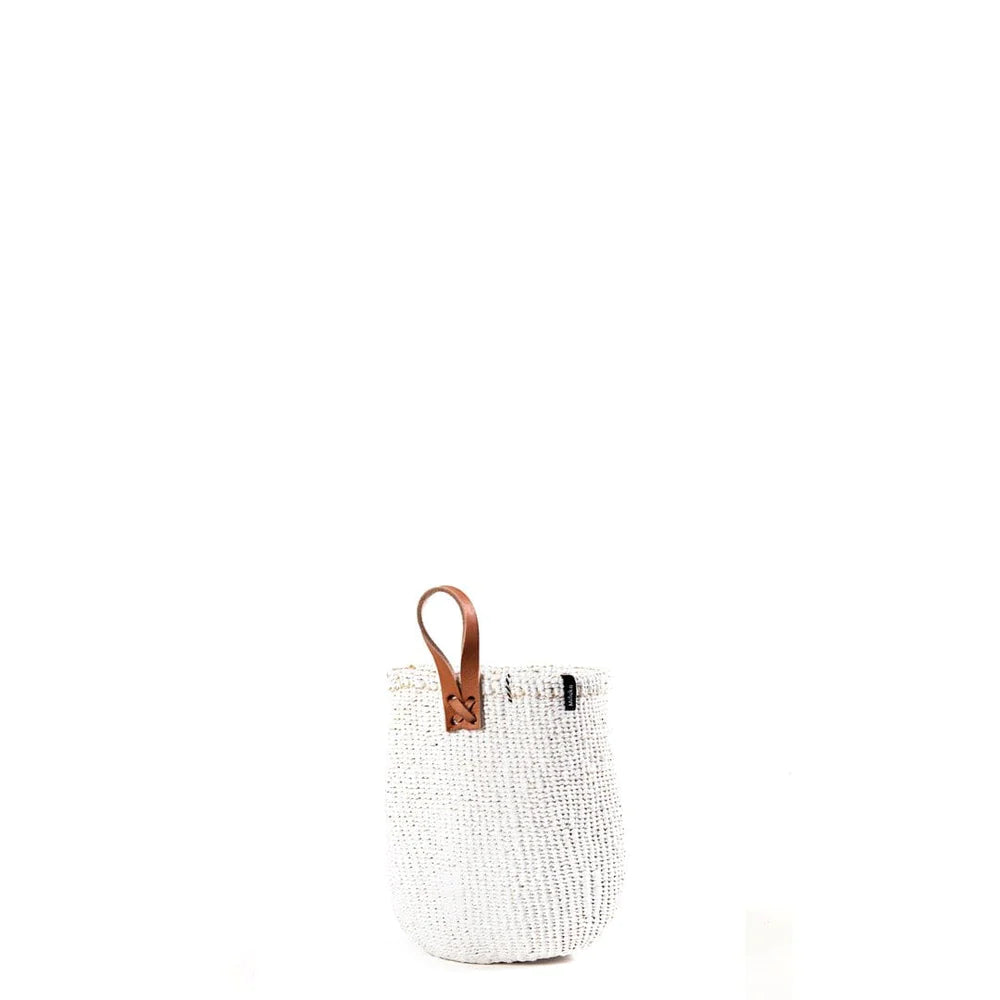Kionda basket | White with loop | XS small
Regular price$32.00
/
- Low stock - 1 item left
- Inventory on the way
The tradition of weaving baskets in Makueni region of Kenya started in the early 1930’s. The women weaved baskets for various uses, such as shopping, carrying goods in the markets, storing food, spices and water, and giving as gifts as weddings. However, the main use for baskets was during the harvesting season to carry fruits and vegetables. The technique a basket-maker chose depended on the purpose of the basket. The ones used for storing water included clay to prevent the water from draining: they were first woven, then coated with clay on the inside and finally left to dry. The weavers used different materials, such as dried palm and banana leaves, African bamboo, wool and sisal fiber. Bigger baskets were used for the harvest and storage of food and water, while the smaller ones were used to carry goods and given as gifts. Different colorful patters were also added, both in order to show that the weaver was skilled and to decorate the basket beautifully.
The tradition still exists in Makueni, where most weavers have learnt the skill from their mothers and grandmothers. Besides using the baskets for shopping and harvesting, they now also sell them at markets. The technique of weaving has changed in terms of size, shape, and materials. Most women find the Mifuko patters and design very different from what they are used to; sometimes they wonder how simple the Scandinavian style is and they are surprised to know that someone would want a black colored basket in their home. Also, the traditional baskets don’t have leather handles like the Mifuko baskets, but instead sisal straps as handles. Kenya handicraft skills now get to travel the world as Mifuko baskets are sold in over 30 countries. Having a market for the baskets is important. Without customers and earnings from the baskets, the weaving skill fades away and is no longer taught to the next generation.
The tradition still exists in Makueni, where most weavers have learnt the skill from their mothers and grandmothers. Besides using the baskets for shopping and harvesting, they now also sell them at markets. The technique of weaving has changed in terms of size, shape, and materials. Most women find the Mifuko patters and design very different from what they are used to; sometimes they wonder how simple the Scandinavian style is and they are surprised to know that someone would want a black colored basket in their home. Also, the traditional baskets don’t have leather handles like the Mifuko baskets, but instead sisal straps as handles. Kenya handicraft skills now get to travel the world as Mifuko baskets are sold in over 30 countries. Having a market for the baskets is important. Without customers and earnings from the baskets, the weaving skill fades away and is no longer taught to the next generation.







